How to plant mangoes at home and grow them yourself
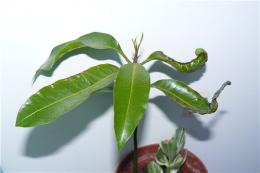
Mango is an evergreen tree with beautiful dense red-green glossy leaves. The plant can reach thirty meters. Its homeland is India, but this is not an obstacle to its spread throughout the world. The fruit is valued for its high content of ascorbic acid, beta-carotene and excellent taste.
Content:
Briefly about the plant
In the collections of many lovers of exotic plants, the mango tree is found not as a fruit-bearing plant, but as an ornamental one. Anyone can grow it from a seed. If you fail to achieve results in fruiting, then it will not be difficult to achieve a decorative effect. During flowering, the tree is covered with fragrant inflorescences, pale pink panicles.
The problem of the huge size of the tree can be solved, since in this way regular pruning you can form a neat compact plant that will decorate your exotic collection. Breeders have also developed a low-growing variety of mango, but it will not be possible to grow it from a seed; seedlings must be purchased at special retail outlets.
If the climatic conditions of your place of residence are similar to the conditions of the mango’s homeland, then the effectiveness of the idea of \u200b\u200bgrowing this tropical plant in open ground is guaranteed. In harsh winter conditions this is much more difficult to do, but possible.Mango can grow even in an apartment, you just need to provide a sufficient amount of light and moisture, and a seed from a purchased fruit is suitable for planting material.
Trying to grow a mango tree at home can hardly be called rewarding. There is no chance of achieving a high yield, and the taste of the fruit is not always transferred from the parent tree to the young seedling. There may be several reasons for low performance:
- Limited conditions for normal growth and development
- The origin of the bone is from hybrid tree
- Long waiting period for harvest (about six years)
Three ways to propagate mangoes
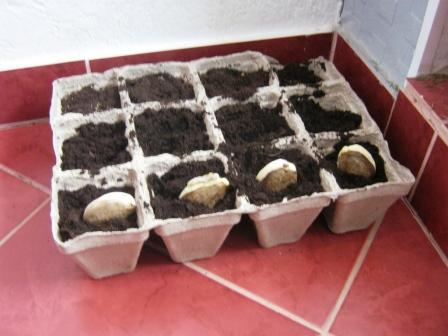
Planting mango from seed
To do this, you need to choose a ripe or even overripe mango in the supermarket. It should be soft and fragrant. At home, thoroughly clean the pit from the pulp. Using a knife, slightly spread the shell and release the sprout (there is a better chance that the seed will sprout). The split seed must be planted without delay; within a day it will lose its viability.
Important: sometimes in an overripe fruit the seed bursts on its own, and the top of the sprout is located inside the pulp itself, so do not damage it when cleaning the seed.
If you decide not split a bone then place it in a weak solution of potassium permanganate for two days for the purpose of disinfection. When it is not possible to plant a seed in the ground immediately, it can be stored in the refrigerator for two weeks, you just need to wrap it in plastic and make sure there is sufficient humidity inside it.
In order to increase the chances of growing mangoes at home, it is better to plant several seeds at once.Then you can grow one tree as an ornamental one, and get fruit from others using a scion (if you graft a plant, it will be able to bear fruit in three years). If one of the sprouts dies, you will have a backup option.
Soil preparation
- Take a medium-sized pot with strong sides and a strong bottom, and check for drainage holes.
- Place pebbles or expanded clay on the bottom.
- Fill the container with soil (peat plus sand).
- Disinfect the soil.
- Place the narrow end of the seed in the ground so that one third is on the surface.
- Cover the pot with plastic wrap and place it in a warm place.
- Be patient, germination time is from ten days to a month.
Avoid problems with humidity changes and death of the sprout A hydrogel will help, which is able to maintain a constant level of humidity, and the owners only have to add water on time.
Scion is a guaranteed way to get mango fruits
This method will be successful if you, your friends or in stores in your city have a mango tree that is already bearing fruit, then you can buy or ask for cuttings for scioning. You also need to grow several seedlings from seed. Using the scion method, you can achieve fruiting of a tree in just a couple of years.
The graft should be carried out during April - May, but the cuttings should be prepared by the beginning of March. The rules for this manipulation are the same as for all fruit trees.
Mango tree from nursery
Buying a mango tree at special points of sale of exotic plants will not present any difficulties, but planting the plant correctly and caring for it can be a problem.Follow several rules that guarantee good growth and fruiting of the mango tree:
- Do not rush to transplant the plant into open ground directly from the nursery: give it the opportunity to get used to it for several days in the open sun, but in the “native” soil from the nursery.
- Do not plant the plant near a water source: it loves moisture, but its excess will lead to the death of the tree.
- Make sure the soil is sufficiently acidic. Do not overdo it with fertilizers; in nature, the mango tree is not too picky about the quality of the soil. You can add organic matter, but its percentage should be insignificant. The frequency of application of fertilizers is once a month in the first year, once a season in subsequent years.
Seedling care
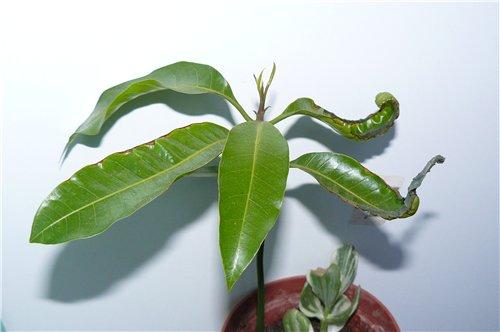
A mango tree obtained by grafting or purchased in a store is not as fragile and whimsical as a seedling sprouted from a seed. In order for it to have a chance to survive, you need to choose the right time for transplantation.
When the roots of the seedling have entwined the soil in the pot (this happens a month and a half after germination), the plant can be planted in open ground. The place should be sunny, but constant exposure to direct rays can harm the seedling. The best option is diffused sunlight.
Watering must be carried out abundantly, but infrequently: a period of time between waterings is needed, but you should not allow it to dry out, this will lead to the death of the mango tree.
Feeding - once every three weeks weak organic solution. Direct contact of fertilizers with the trunk, leaves, and root system should not be allowed, otherwise the death of the plant is inevitable.
A one and a half meter tree must be pruned, forming the crown at your discretion.If the mango grows in frost-free winter conditions, it does not need to be dug up and replanted; it will be enough to simply wrap it in an old blanket or other insulation material for a period of relatively low temperatures.
If the growing area of the plant does not allow the mango tree to be kept in open soil all year round, before the onset of cold weather it needs to be pruned, replanted in an appropriate container and moved indoors.
A good option for growing mango trees indoors are dwarf mango seedlings: they are small in size, can bear fruit with normal care and will be an excellent decoration for your room.
Video about growing mangoes at home:
Interesting information about the vegetable garden

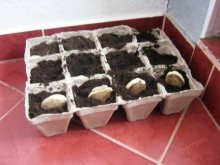
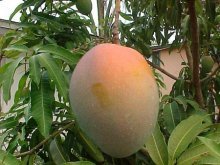


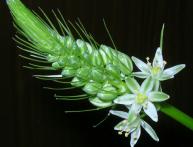

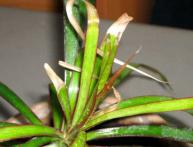



Comments
Unfortunately, my climatic conditions do not allow me to grow mangoes in open soil, but you can try growing them at home. Judging by the article, the tree is unpretentious.